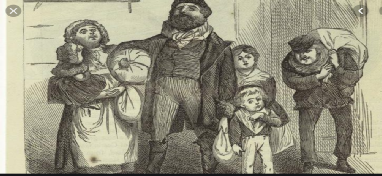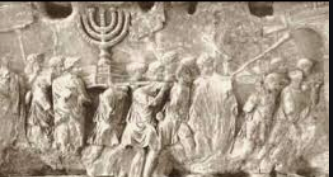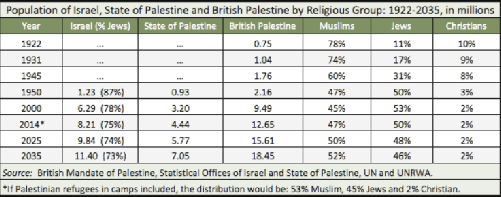|
CLICK BUTTON TO GO TO PART |
The Diaspora is
‘The Jews or Jewish communities scattered “in exile” outside Judea/Palestine
or present-day Israel.
Go to Countries
and then click on the country of interest to find out what happened to them.
(See also
What is a Diaspora)
|
PART 1 T O P I C |
|
|
|
|
|
|
|
|
|
|
|
|
|
|
|
|
|
|
JewishWikipedia.info
THE
INCREDIBLE
STORY OF THE JEWISH PEOPLE
SETTLEMENT IN PALESTINE
Wikipedia
The full extent of the cultural, linguistic, religious or other differences among the Israelites in antiquity is unknown. Following the defeat of the Kingdom of Israel in the 720s BCE and the Kingdom of Judah in 586 BCE, the Jewish people became dispersed throughout much of the Middle East, especially in Egypt and North Africa to the west, as well as in Yemen to the south, and in Mesopotamia to the east. The Jewish population in Palestine was severely reduced by the Jewish-Roman Wars and by the later hostile policies of the Christian emperors, against non-Christians, but the Jews always retained a presence in the Levant. Paul Johnson writes of this time: "Wherever towns survived, or urban communities sprang up, Jews would sooner or later establish themselves. The near-destruction of Palestinian Jewry in the second century turned the survivors of Jewish rural communities into marginal town-dwellers. After the Arab conquest in the seventh century, the large Jewish agricultural communities in Babylonia were progressively wrecked by high taxation, so that there too the Jews drifted into towns and became craftsmen, tradesmen, and dealers. Everywhere these urban Jews, the vast majority literate and numerate, managed to settle, unless penal laws or physical violence made it impossible."
In the early-Byzantine 6th century, there were 43 Jewish communities in Palestine. During the Islamic period and the intervening Crusades, there were 50 communities which included Jerusalem, Tiberias, Ramleh, Ashkelon, Caesarea, and Gaza. During the early Ottoman Period of the 14th century there were 30 communities which included Haifa, Shechem, Hebron, Ramleh, Jaffa, Gaza, Jerusalem, and Safed. The most dominant location became Safed which reached a population of 30,000 Jews by end of the 16th century, after the expulsion of Sephardim from Iberia, a century earlier. The 16th century saw many Ashkenazi Kabbalists drawn to the mystical aura and teachings of the Jewish holy city. Johnson notes that in the Arab-Muslim territories, which included most of Spain, all of North Africa, and the Near East south of Anatolia in the Middle Ages, the Jewish condition was easier as a rule, than it was in Europe.
Over the centuries following the Crusades and Inquisition, Jews from around the world began emigrating in increasing numbers. Upon arrival, these Jews adopted the customs of the Mizrahi and Sephardi communities into which they moved. With Baron von Rothschild's philanthropic land purchases and subsequent efforts to turn Palestine into a verdant Jewish homeland, and the subsequent rise of Zionism, a flood of Ashkenazi immigration brought the Jewish population of the region to several hundred thousand.
The growth of fascism, the results of World War 1 and 2 and establishing the State of Israel in 1948 saw world wide immigration of Jews into Israel as their new homeland. Added to this was the expulsion of approximately 1,600,000 Jews by Arab countries between 1948 and 2012.
BY 2035, JEWISH POPULATION IN ISRAEL/PALESTINE
IS PROJECTED AT 46 PERCENT
Mondoweiss, Joseph Chamie, February 21, 2014
A large amount of news, analysis and political rhetoric is disseminated daily about the current American-initiated Israeli-Palestinian peace negotiations. However, comparatively little attention — and, hence, insufficient understanding — is given to a critical aspect of the decades-old conflict: population growth. Differential rates of population growth are redefining the relative demographic standing of Arab-Israelis, Jewish-Israelis and Palestinians in the region, pointing to a challenging demographic future for the Jewish-Israeli majority and affecting key negotiating concerns, positions and strategies, including establishing borders, the status of settlements and the return of Palestinian refugees.
The tract of land at the center of the conflict — the former British Mandate of Palestine – is relatively small. The combined surface area of Israel and the State of Palestine (the Gaza Strip plus the West Bank) is about the size of Haiti and can be fit into Texas about 25 times. The relative proportions of this combined territory are 79 percent Israel and 21 percent Palestine territory (20 percent West Bank and 1 percent Gaza Strip).
The total number of people residing in this tract is also not large. Fewer than 13 million — numerically equivalent to 4 percent of the US population — live there. As is widely acknowledged, the central defining characteristic of this population is its religious affiliation. A brief look at the past provides insight into the demographic status and growth of the major religious groups in this troubled land.
With the establishment of the British Mandate of Palestine after World War I, the first British census of Palestine in 1922 enumerated a total population of about 750,000, of which 78 percent were Muslim, 11 percent Jewish and 10 percent Christian (Table 1). Nearly 25 years later, before the United Nations’ partition of the Mandate for Palestine, in 1947, the population had grown to nearly 1.8 million, with 60 percent Muslim, 31 percent Jewish and 8 percent Christian.
Population of Israel, State of Palestine and British Palestine by Religious Group: 1922-2035, in millions
The estimated 1950 population residing in the former British Mandate of Palestine exceeded 2 million, representing an almost equal balance of Jews (50 percent) and Muslims (47 percent) and Christians, shrinking to 3 percent (Table 1). Because of different rates of population growth among the religious groups, especially with large-scale immigration, the Jewish proportion of this combined population continued to increase throughout the second half of the 20th century.
At the start of the 21st century, the Jewish proportion peaked at 53 percent, followed by Muslims at 45 percent and Christians at 2 percent. Today, the Jewish proportion represents half of the resident population in Israel and the State of Palestine. However, if Palestinian refugees living in camps in neighboring countries are taken into account, the majority of the population, 53 percent, would be Muslim.
In 1947, Mandatory Palestine was partitioned by the UN General Assembly into two states, one Jewish and the other Arab. Three years later, the population of Israel increased to 1.3 million, with 87 percent being Jewish Israelis. The population of Palestinians living in the State of Palestine (the Gaza Strip and West Bank) was slightly less than a million. Additionally, an estimated 500,000 Palestinians were displaced as a result of war in nearby countries, mainly to Jordan, Lebanon and Syria.
Because of high levels of Jewish immigration to Israel, especially from the former Soviet Union, as well as high birth rates, the population of Israel grew to more than 6 million by the close of the 20th century, but the proportion of Jewish people declined to 78 percent, a 9 percentage-point drop from 1950. In contrast, the demographic growth rate of Palestinians fluctuated considerably during this period, a result of wars and further civilian displacements.
At the end of the century, the Palestinian population living in the State of Palestine reached slightly more than 3 million, with at least an additional half million Palestinians living in refugee camps in neighboring countries and more than two million residing outside camps.
The population of Israel in 2014 is approximately 8.2 million, about the same size as New York City, with 75 percent of the population being Jewish Israelis. The Israeli population is growing at about 1.8 percent a year. Although relatively low in comparison to the rates of the 1990s, Israel’s current demographic growth is double the rate of the United States and many times greater than Europe’s. The median age of the Israeli population is 30 years old, which is about 15 years younger than the average ages in Germany, Italy and Japan. Israel’s fertility rate is about 3 children for every woman, again well above the average for most developed countries.
This comparatively high birth rate, however, has not deterred women from pursuing higher education. In fact, women account for the majority, 56 percent, of college students in Israel.
Immigration contributed greatly to the rapid growth of Israel’s Jewish population, but today it is estimated that more than half — about 58 percent — of the world’s Jewish population lives outside Israel, mainly in the US, at about 40 percent, followed by France, Canada and Britain, each under 4 percent. As large-scale Jewish emigration from these developed countries to Israel is considered unlikely, most of Israel’s current and future demographic growth will be the result of natural increase.
The population of Palestinians in the State of Palestine in 2014 is about 4.4 million, with 1.7 million in the Gaza Strip and 2.7 million in the West Bank. According to the UN Relief and Works Agency, which is responsible for the care of Palestinian refugees, more than 1.5 million Palestinian refugees are living in camps in countries in the region. The number of Palestinian refugees in neighboring countries but living outside refugee camps is estimated at approximately 4 million.
The Palestinian population living in the State of Palestine is growing comparatively fast, 2.4 percent a year, or 33 percent higher than Israel’s current rate of population growth. The population is also young, with half 18 years old or under, making it the youngest population in the region. Although Palestinian fertility has declined substantially from a record high of about 8 children per woman in the 1960s, it remains comparatively high at more than 4 children for every woman.
As noted in the case of Israel, even with high birth rates Palestinian women actively pursue higher education, constituting the majority, 56 percent, of college students.
Population projections for the next 20 years indicate continued demographic growth for both Israel and the State of Palestine. The Palestinian population is expected to grow more rapidly than the Israeli population because of higher fertility rates. Whereas the Israeli population is expected to increase by about 40 percent by 2035, the Palestinian population is projected to increase by nearly 60 percent (Table 1).
Population projections also show that while the Jewish proportion in Israel will decline slightly over the next two decades, it will continue to be the dominant majority of the Israeli population, 73 percent in 2035. This is not the case, however, when one considers the entire future population residing in the former British Palestine. Demographic projections indicate that less than half of the future population residing there would be Jewish, 48 percent in 2025 and 46 percent by 2035. But if only the West Bank population were to be incorporated into Israel, the Jewish proportion would be a declining majority, 57 percent in 2014 to 53 percent by 2035.
Given the many contentious issues, powerful interests and past failed attempts, a successful outcome of the current Israeli and Palestinian negotiations is at best uncertain. Yet, at least one issue remains clear: Whatever future comprehensive peace agreement eventually arises, be it a one-state, two-state or three-state solution with agreed upon territorial and population swaps or something else, the population growth of the major religious groups residing in this troubled land will continue to have significant consequences that will reverberate well beyond its boundaries, just as it has in the recent past.
This piece first appeared at Pass Blue, a CUNY site covering the UN, with the headline
“Israeli-Palestinian Population Growth and Its Impact on Peace.”
SETTLEMENT IN ISRAEL
|
By 2035, |
The Demographic History of Palestine
refers to the study of the historical population of the region of Judea/Palestine, which approximately corresponds to modern Israel and the Palestinian territories, and in some sources,
also western parts of Jordan. Wikipedia (Figures in ‘000)



